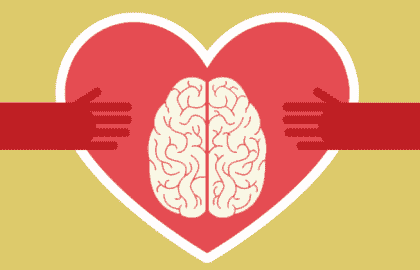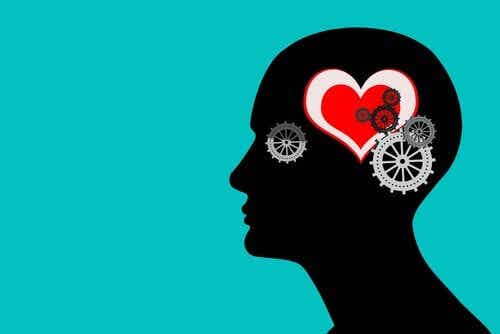It is necessary to be able to distinguish the three main differences between emotions and feelings in order to manage them better

Last update: Augusts 21, 2020
You have probably confused more than once emotions and feelings, since in practice we experience both phenomena in unison and confusion is easily created. However, it is very important to know the differences between emotions and feelings, as the way to manage them changes and the needs that generate them are not the same.
In this article let's talk briefly about the three main differences between emotions and feelings. The goal is to learn to distinguish them so as to achieve greater emotional intelligence, be more reflective and avoid remorse. Our emotional world can lead us to act in the grip of the "adrenaline" of the moment, but if we try to identify and distinguish between emotions and feelings, it will be easier for us to change them (Goleman, 1996).
3 differences between emotions and feelings
1- Automatic vs reasoned origin
While emotions mainly originate in the limbic system and in the most primitive part of the brain, feelings belong to the frontal lobe.. In other words, feelings are the result of abstract thought, while emotions are innate and genetically determined as they are the result of evolution. Equally, although it may seem strange, there is a finite or "maximum" number of emotions that we can feel as human animals, unlike feelings that are unlimited.
The latter, in fact, and as we will see later, are defined verbally; emotions instead on a psychophysiological level. Feelings originate in the cerebral interpretation we make of events and sensations, while emotions arise from the areas of the nervous system responsible for rapid responses (sympathetic and parasympathetic).
While emotions mainly originate in the limbic system and in the most primitive part of the brain, feelings belong to the frontal lobe.
2- The speed with which they arise and change
Emotions are immediate, they constitute the alert and survival system of our organism. Only after we understand what happened and why we feel the way we do, do we talk about feelings and not emotions. To feel a feeling, you have to think about what happened (evaluate the emotion), reflect on how we behaved and thus begin to process it psychologically.
Since emotions are born and die quickly, our organism has another mechanism of evaluation and motivation: feelings. The feeling is what "remains" of the emotion. One of the main differences between emotions and feelings, in fact, is that the latter are managed little by little, they can change and persist for days, weeks, months and even years.
3- The intensity
Since we understand emotions as the main alert and motivation system with which we are born, we can well understand why they are so intense and powerful. The basic and universal emotions are joy, anger / anger, fear, surprise and sadness; they are very intense and always push us to act or stop doing it. In this sense, surprise would be a neutral emotion whose function is "to alert us and induce us to pay close attention to what might happen".
If you have seen the animated film Inside out, you will have noticed that emotions always push us to do something or to stop doing it. For example, sadness leads us to distance ourselves from others, to sun ourselves to connect with the suffering we feel. Feelings, on the other hand, are much more heterogeneous and slow and lead us to reflect on what is the best way to let go of our annoying or unpleasant emotional state.
At this point, we must remember that the management of negative emotions is achieved through techniques of deactivation and distraction of attention. On the other hand, the management of feelings is achieved through emotionally corrective experiences, Socratic dialogue and guided reflection. In this sense, deactivation and rapid relaxation techniques can help.
Feelings, on the other hand, are much more heterogeneous and slow and lead us to reflect on the best way to leave our annoying or unpleasant emotional state.
We can easily understand that just as there are some differences between emotions and feelings, the management of these two dimensions also changes. While the former require a moment of disconnection (for example, in order not to fuel anger and lose control), the latter they need to be heard and brought back (What happens to me? What can I do to improve my situation?). In any case, both the regulation of emotions and the reinterpretation of feelings are possible, which help to enjoy better mental health (Bigman, Sheppes & Tamir, 2017).


























